
hen we think of poetry, unless we have studied the genre in depth, often what comes to mind are the playful poems of our childhood or the dramatic monologues from our college days. And although we may remember stories told through epic ballads, such as that of Gilgamesh, or Shakespearean sonnet-infused tragedies, rarely do we acquaint poetry with modern day young adult (YA) novels. Yet, in 2018, two novels in verse made it on Publisher’s Weekly Top YA list. YA historical fiction in verse seems to be on the rise. What is it about poetry that allows it to traverse the boundaries of genre? Join Women on Writing for a conversation with Marilyn Nelson, Stephanie Hemphill, and Melanie Crowder, three YA authors who find poetry to be the perfect tool to bring history alive for YA audiences.
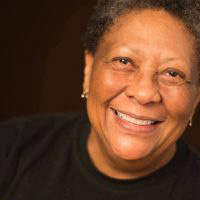
Marilyn Nelson is a Newbery Honor medalist, two-time Coretta Scott King Honor medalist, and National Book Award Finalist, as well as a former Poet Laureate of Connecticut. Nelson’s work is praised for bringing voice to the disenfranchised by exploring race, identity, and complicated truths. Her works include: A Wreath for Emmett Till, My Seneca Village, American Ace, Carver: A Life in Poems, The Sweethearts of Rhythm, How I Discovered Poetry, and many more.

Stephanie Hemphill is a two-time recipient of the Myra Cohn Livingston Award for Excellence in Poetry and has earned the LA Times Book Prize, the Society of Midland Authors Award, and a Printz Honor. Her work features women who have broken the mold in powerful ways and includes Sisters of Glass, Your Own, Sylvia: A Verse Portrait of Sylvia Plath, Hideous Love: The Story of the Girl Who Wrote Frankenstein, and Wicked Girls: A Novel of the Salem Witch Trials. Her new book, The Language of Fire: Joan of Arc Reimagined, is due out June 2019.

Melanie Crowder has been a finalist for the National Jewish Book Award, the Colorado Book Award, and the Walden Award. Her work has received numerous recognitions, including the SCBWI Crystal Kite, the Jefferson Cup, the Arnold Adoff Poetry Award, and the Bulletin Blue Ribbon. Kirkus has praised her writing as “compelling, powerful and unforgettable.” Melanie’s work includes Audacity, Parched, An Uninterrupted View of the Sky, and A Nearer Moon. Her latest book, A Way Between Worlds, will be released October 2019. Melanie teaches online writing classes via the Writing Barn.
***
WOW: Thank you for joining Women on Writing to discuss poetry in YA historical fiction. Before we delve too much into how you each use poetry in your writing, it might be helpful to begin by discussing how historical fiction differs both from nonfiction and fiction.
For Jason Alexander Thom, the difference between historians and historical novelists is defined by the stance from which the story is told:
“While a historian stands firmly planted in the present and looks back into the past, a historical novelist has a more immediate task: to set readers in the midst of bygone events and lead them forward, allowing them to live and feel the wonderment, fear, hope, triumph, and pain as if they were there.”
How have you approached writing historical fiction?
Marilyn: I do historical research, and I try to tell the stories that I find in the research. Most of what I’ve written is partly fiction because I’m imagining my way into the voice of the character and the characters are, for the most part, invented.
WOW: You say your characters are for the most part invented, can you tell us more about that?
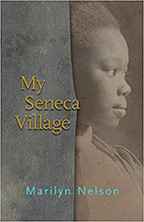
Marilyn: For example, in My Seneca Village, which tells the story of this village in Manhattan that existed from 1825 to 1857—what I did was take names from the census records. The census records identified people by name, address, age, occupation, and race. I picked people from the census records and imagined lives for them, voices for them. I always say that I used them as puppets to illustrate something that was going on, either in the village specifically, or in New York City in general, or in the country. So, it’s partly researched based, and also partly fiction.
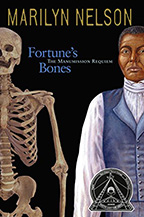
In Fortune’s Bones, I hardly had to do any research, it was all there. I was trying to help the people of Waterbury, Connecticut, come to terms with the faithful history of a slave named Fortune, who, upon death, was rendered into a teaching skeleton by the doctor that owned him. Most of the adults knew about the skeleton because they had seen it on school field trips, so everybody had kind of a personal history with the skeleton. The first poem in the book expressed my deep horror at the situation of his wife having to walk by her husband’s skeleton every day. But that poem itself was completely invented.
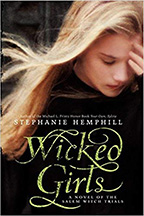
Stephanie: My writing usually begins with pieces of history where there’s an unanswered question. Wicked Girls is a good example of this. The big question of the Salem Witch Trials is: why would these girls get together and accuse people of being witches? Did they lie? Was it because they had eaten bad bread, and there was a biological reason? History can’t know the answer to that, so it’s a good place for fiction to take over. You have facts of something, but then there is a place where an author can jump in to suppose the answer using what we know. There’s a story that wants to be created there.
“Try to be as true as necessary to the story. Sometimes truth is beyond fact. Truth is larger than fact.”
WOW: It seems counterintuitive to say writers can make a story “more true” by adding something not true, but sometimes fictional details can deepen the overall meaning of a story.
Marilyn: To make a better story. Sometimes you might alter details a bit to improve the story, but you want to tell the essential story; you don’t want to change that. Try to be as true as necessary to the story. Sometimes truth is beyond fact. Truth is larger than fact.
Stephanie: Sometimes truth isn’t as obvious as you would think. Whenever you read a lot and do a lot of research, it’s always in conflict to itself. Even in primary sources, things that you think would be indisputable, like dates, they’re not. At some point you’re making choices along the way, even when you are sticking close to facts.
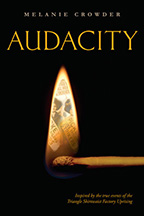
Melanie: I had a little trepidation about writing historical fiction at first. It was really difficult to write about a historical period because I couldn’t just shape the story how I wanted. In Audacity, I felt like I wanted to stay as true as possible to the historical time markers within the time period and within Clara’s journey. I was also writing about a real person whose descendants still very much care about her legacy and are very invested in seeing her ideals and truths honored. So, all of that, these different weights, sort of shaped the story along with me. It certainly wasn’t a freeing poetic experience. I was very aware of the responsibility I was bearing in telling her story.
WOW: What are the challenges of crafting those details that aren’t in history. How do you fill them in?
Stephanie: I usually write the first draft as close to the historical record as possible and find my story in later drafts. The story comes from the thing that you’re going to care about, that’s going to come alive, be relatable. That might deviate a little bit from the actual facts of what happened, where I’m going to either collapse facts or I’m going to create scenes that we can’t know—like scenes where characters fell in love, that we just can’t know. It could have happened; it always has to be possible. I’m not going to put in a scene in a coffee shop that couldn’t have existed in the time period or add characters that were real that couldn’t have possibly been there. But I’m going to create dialogue that I could not possibly know happened; I’m going to create sensory details. I’m going to put emotion in and a story arc that is hopefully compelling. There’s a little slight of hand with it. You’re set in the period, but the story is its own thing. Even though you’re not ever betraying the history, the story that you’re trying to tell is going to trump the historical record.
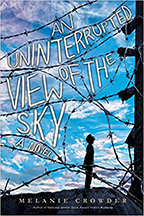
Melanie: It is always difficult when it’s historical fiction because, especially in a place like Bolivia, where An Uninterrupted View of the Sky is set, there is not very much historical data to find about what the prisons were like in the late 1990s. If I had not been there and seen it with my own eyes, if I had not walked into those prisons and seen the families all living together in these ramshackle cells, I don’t know if I would have felt that there was enough fact that’s been collected in this historical data to be able to say yes, this is true. I don’t know that there would be enough substance there if I hadn’t seen it with my own eyes. And then for someone who takes historical fiction as seriously as I do and as many writers do, we always get our stories vetted. We always fact check everything, whether it is a cultural element, a historical element, or a geographical element.
“Even though you’re not ever betraying the history, the story that you’re trying to tell is going to trump the historical record.”
WOW: Sometimes history is not rated G, or in many cases, even PG-13. How have you handled so-called sensitive issues in your books?
Stephanie: I can’t say Joan of Arc didn’t die. I can’t change the end of her story. I can’t say Sylvia Plath didn’t commit suicide. That would be so wrong. Do I wish that Sylvia hadn’t done that? Yes, because I love her. It was terrible to write the poem right before she kills herself. I didn’t want to write that. I hated it, but I can’t change that. I want you to be able to read this and learn something about history and learn something about this person; but also learn about their humanity at the same time, so that’s the balance.
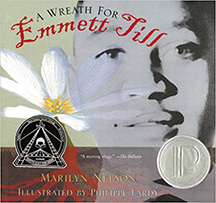
Marilyn: When Emmett Till came out, there were a couple nasty letters from parents of thirteen year olds, saying, “How dare you publish something so graphic in a book that’s going out to people this age?” I said, “This is the world.” Carver was this age when he actually, literally, saw this. I’m not going to tiptoe around it. You can’t always protect children. Holden Caulfield says, excuse my language, but he says, “You can’t erase all the fuck-yous in the world.” In the Emmett Till piece, I was asked by the editor to write a book about lynching for young readers. There is no way you can write a gentle, sweet book about lynching.
“There is no way you can write a gentle, sweet book about lynching.”
WOW: How does the structure of poetry serve you in telling these important, and sometimes difficult, stories?
Melanie: In An Uninterrupted View of the Sky, one of the ways that Francisco and his father communicate is through poetry. So, there are free standing, free verse poems within a prose novel. There’s one poem about a time when Francisco’s father was driving his taxi, sort of crunching along the road beside what was an old hacienda. And I had never found a place in the story to be able to communicate to the reader the full weight of colonialism and all that it had done to the culture and the people within Bolivia. You can’t give a lecture on the ills of colonialism within a historical novel. But I was able to leave little hints about it. I used the word “slave” in reference to the way that the indigenous people were treated by the Spaniards. Just little tiny details within that poem that a reader would be able to absorb and then better understand the position that the family was in, in society as a whole. Because a modern US reader doesn’t know those seismic events, as they occurred in Bolivia. And so, to be able to just lightly drop in hints about one of those things was something that I really had to find a very delicate balance for, and I thought that poem did well.
WOW: But the main story in that book is told through prose, right? Why not tell the whole story through poetry?
Melanie: When I first started writing An Uninterrupted View of the Sky, it was coming out in free verse, and I actually stopped myself and made myself write it in prose just because I still had Clara [from Audacity] in the back of my head, and I had no interest in telling the same story or using the same tricks or being lazy with the poetry. I wanted to be able to find Francisco’s voice myself. I wanted his voice to be authentic, and I wanted his story to be its own. So I knew that when I switched it over to prose, if it needed to go back to poetry, I would absolutely do that, but I needed to give that character time to find his own voice first.
“Form operates for the poet like asbestos gloves, so that we can deal with horrible subject in form, and you’re protected by the form.”
WOW: So, back to the structure of poetry...
Marilyn: One of the things I decided to do when I agreed to write a book for children about lynching was to write it in such an obvious, powerful literary form that the form would be a kind of insulation for the reader. Because people get caught up with “this rhymes with that” and “this line is repeated,” and that’s an insulation. If you just sit down and write a description of what happened to Emmett Till, I think it would be unbearable to read it. But doing it with a form offers a kind of insulation. Adrienne Rich once said that form operates for the poet like asbestos gloves, so that we can deal with horrible subject in form, and you’re kind of protected by the form. That’s true for the writing, and I think it’s also true for the reading.
Stephanie: Poetry also can serve as a vehicle to support the historical facts with a story and a character that make it relevant, make it real, make it have some meaning beyond just—this happened, and this is something that you study in a class. Expanding a piece of history from just the facts to a story that shows readers: this is why you would want to read this as a book that’s just for pleasure, not only because it’s assigned. Poetry helps with that.
WOW: I think that’s something important to all writers, making the story relevant through believable characters. History doesn’t record emotion, though, so how do you make your characters, these people who really lived, believable in their emotional journey?
Melanie: In Audacity, there’s an element of translating a different culture, a different religious tradition, and a different century from what my current readers experience. Even for my readers who are Jewish, the way that religion was practiced in the old country, a hundred years ago, is for many very different from the way that religion is practiced today. So, it was a matter of translating the family expectations on the different members of that family. Because of the family relationships in play over the journey and working with the historical data point that Clara began work two weeks after her arrival in New York City in a garment shop, I felt like it was important to show that in her family’s tradition and the cultural religious tradition that she came from, it was of utmost importance that men were scholars of their religion and the women worked to provide for their families to free up the men to do the scholarship. So, I made a choice to put her brother in the hospital, as opposed to the father. That was one of those times where I put the story first and translation of cultural norms first, so that I could more clearly convey to the reader the pressures that were on Clara’s shoulders. And how important it was for her to be able to work for her family, so that when the time came, when she said, “I’m not going to work. I’m going on strike, even though that might get me fired, and I definitely won’t get paid for today,” readers could understand how very difficult that was for her family and for her. How that decision wasn’t just, “Oh, I don’t think I’m going to go to work today. I may not be able to pay for the movies, but oh well.” That’s not what it was. It was this immense responsibility on her shoulders. That’s why I made that decision.
Stephanie: It’s different for each book. For me, there’s a point at which I have to connect in some personal way with the character. This doesn’t mean that what has happened to the character happened to me because it certainly hasn’t. Joan of Arc is a really easy example of this. I’ve never been a warrior or heard voices from God or the Saints. But I can relate to feeling like you don’t know what your higher purpose is, to feeling voiceless, to wanting to find courage when you are most afraid. I think that’s a good way to think about how to create these universal truths that pull a reader in and makes them care about the history.
“You don’t have to put all of your research into the story, just find the little nuggets that make it really come to life.”
WOW: We’ve talked about a lot of issues today. Do you have any advice for fellow writers who may be considering writing historical fiction or using poetry to craft their story?
Stephanie: When writing historical fiction, I try to walk the line of making sure the story works. If you lose your reader, the history isn’t going to matter. You can’t sacrifice the story to tell the history, but you also can’t ever betray the history.
Melanie: One really important thing when you are writing historical fiction is: yes, you have to immerse yourself in that historical world, so that once you drop your reader into it, they will feel as natural walking down the street with that character as if it were current day, something that they see all the time. But it’s not about the quantity of information that you put in your story; it’s about finding just the right little facts, the little details that will bring that world to life and make it feel really immersive. You don’t have to put all of your research into the story, just find the little nuggets that make it really come to life.
Marilyn: Some people are desperately looking for stories, dramatic stories. But I don’t think that’s necessary. My advice would be: look at your local history, ask questions, talk to the old people in families. Muriel Rukeyser said once, “The universe is made of stories, not of atoms.” Everybody has stories; we’re made up of stories. Why not capture them?
As far as whether to use poetry, it’s about finding your voice, your way to tell the story.
***
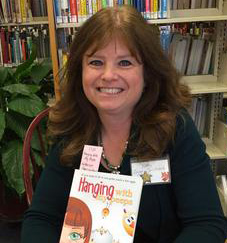
Kathy Higgs-Coulthard is founder and director of Michiana Writers’ Center in Indiana, a fun job that provides just enough income to support her addictions: caramel macchiatos and frenzied bursts of caffeinated fiction writing. Kathy’s middle-grade novel, Hanging with My Peeps, is available through Amazon. You can visit her online at www.writewithkathy.com.
-----
Enjoyed this article? Check out these related articles on WOW!:
5 Historical Fiction Pitfalls and How to Avoid Them
It’s Not Easy Being a Historical Fiction Writer: Experts’ Insight Into the Genre